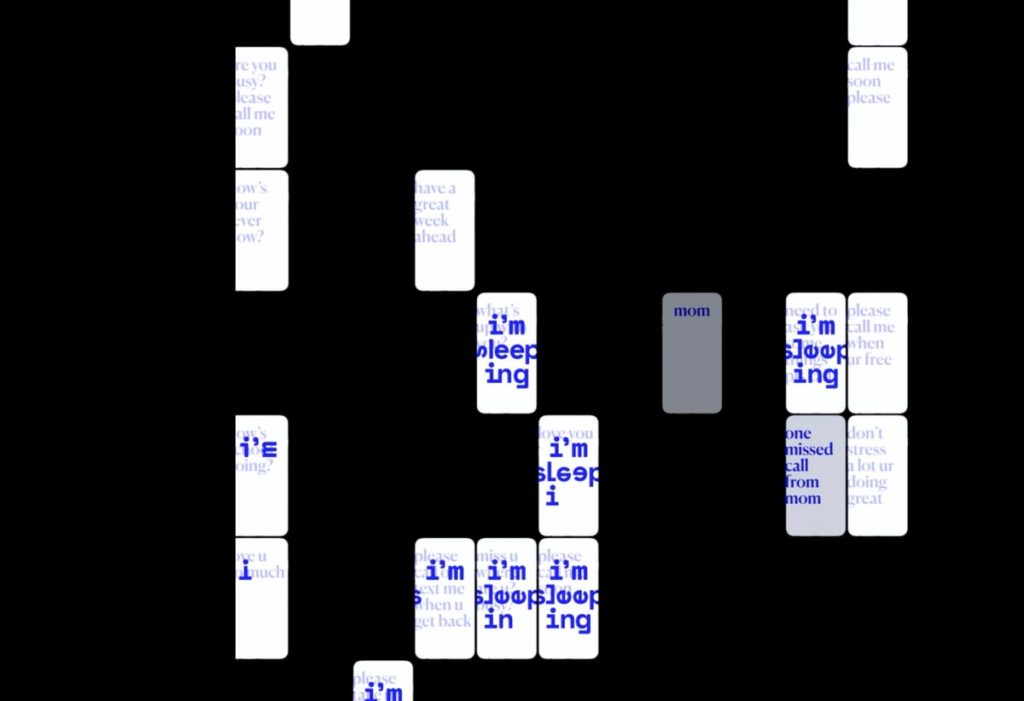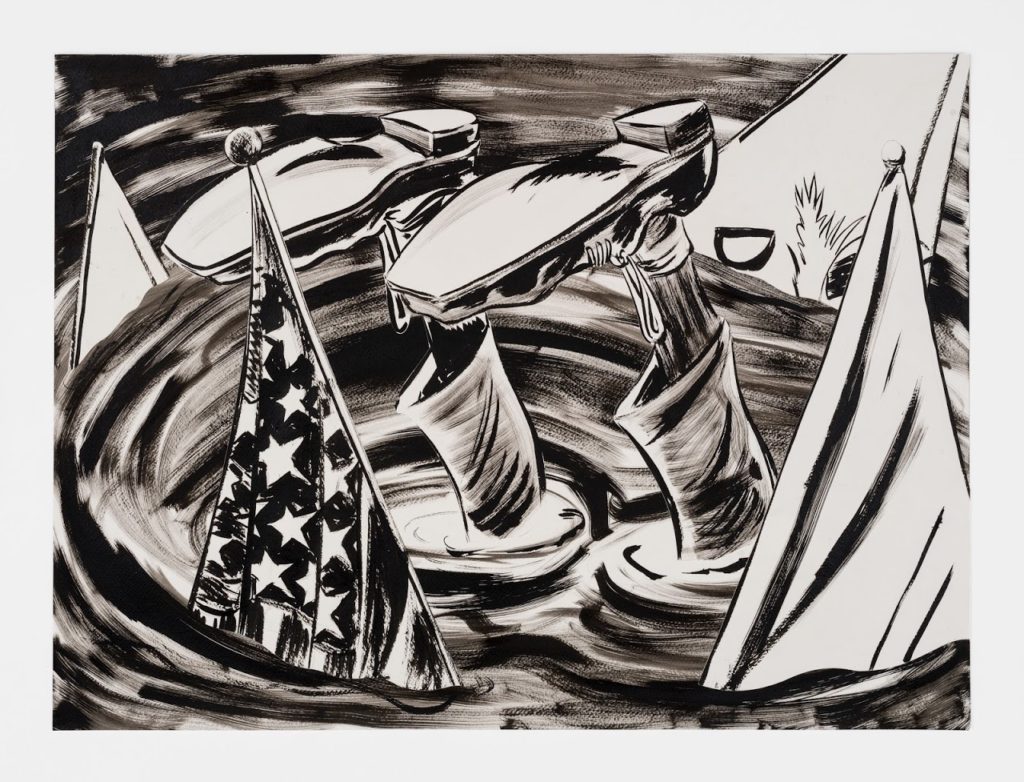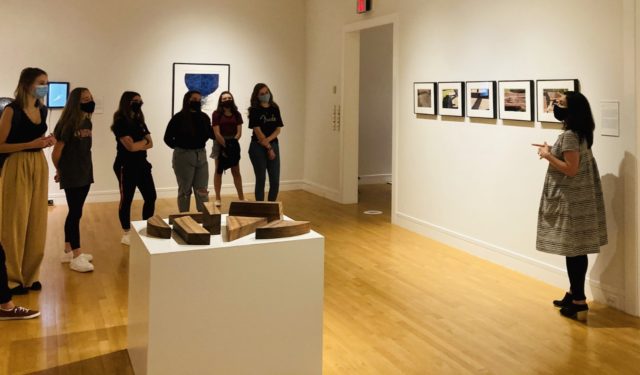In the Fall semester, Professor Pasero-O’Malley’s Spanish 102 students visited the Van Every/Smith Galleries to view the “From Pandemic to Protests” exhibition. The goal was for students to write a personal and creative analysis about one of the works in the exhibition in an essay in Spanish. This was a great opportunity for a COVID-safe interdisciplinary activity that connected themes of art, Spanish language, and current events.
Below are some of their anonymous insights, translated into English.

I’m Sleeping, 2018
Progressive Video
Gift of Charlotte and Alan Artus
Katyayani Singh’s video I’m Sleeping captures feelings of depression, hopelessness, and loneliness, as seen through the video’s words that flash across the screen, with ‘I’m sleeping’ replacing ‘I’m sad’ and ‘I’m alone.’ Singh’s work is about her separation from her mother, who lived in a different country, but can be extended to feelings of isolation more broadly, and the students reflected on their own experiences with the COVID-19 pandemic and quarantine. They connected with I’m Sleeping’s depiction of the “common and human experiences of anxiety and depression,” as one student explained. The video repeats endlessly, “like the [literal] isolation of the pandemic,” they continued. Another student contemplated internal and emotional isolation, saying, “during the pandemic, I didn’t go out of my house much and didn’t see my friends. I think I started to lose special friends. I think that when people are sad and anxious, they isolate themselves from everything.”

Feeding Grounds, 2020
Ink on paper collage
22 x 30 in.
Promised gift from John Andrew MacMahon ’95
Mark Thomas Gibson’s Feeding Grounds is a vignette created though black-and-white ink and collage, and one student interpreted the title as about both “animals when they are eating,” and how people of color are “eaten up” by hegemonic American culture. Feeding Grounds depicts a man in a whirlpool, “drowning in systemic racism,” upside down with only his shoes visible. One student explained that the work is about how the government has “failed to take steps to protect the people in the United States” and that Gibson “drew inspiration from the presidency and the ‘Unite the Right’ movement in Charlottesville, Virginia.” Students said that America—as represented by the flag—creates the “perfect storm” for racism to thrive, and they connected with Feeding Grounds’ chaotic portrayal of current sociopolitical issues, including systemic injustice.

Extensión, 2008
Human hair
22.5 x 15 in. each
Gift of the Artist
Regina José Galindo’s Extensión argues against the rampant, unchecked violence against women in Guatemala and honors all the women “who disappeared without a trace,” as one student wrote. Galindo created Extensión by collecting hair from unidentified female victims to form six hair extensions. The work’s live element—where Galindo sewed the extensions into the hair of herself and five other women, which they then wore for over 36 hours—was “able to create history for women without names,” one student put. Another student continued, “hair is often a symbol of strength and beauty, and Galindo reclaims the strength and beauty of these women in the work. She presents growth and healing after violence and trauma.”
The original analysis in Spanish is attached in a PDF created by Professor Pasero-O’Malley.
-Isabel Smith ’24

